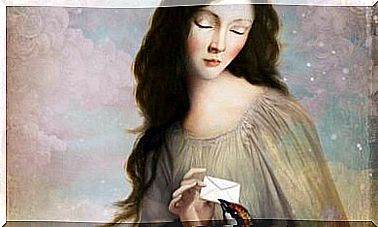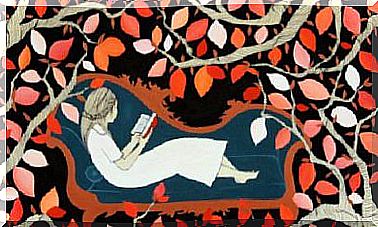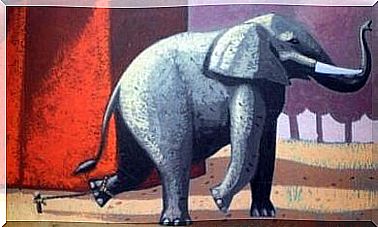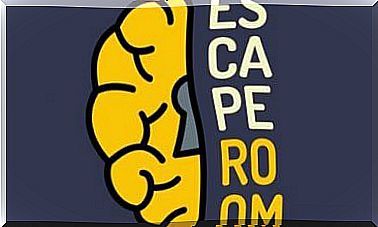Big Eyes, Women And The Art World
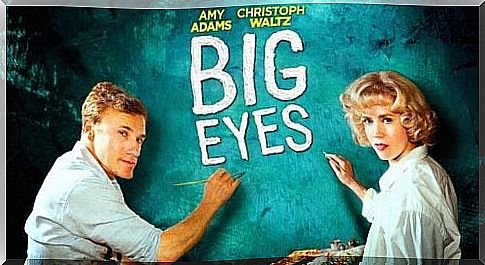
Big Eyes (2014) is probably the least ‘Burton-esque’ Tim Burton film. It’s actually quite difficult to find his unique style in the film. The way of production is not at all like the way Burton normally does this. This is because this movie is based on true events. We’re talking about a film that completely lacks Burton’s signature style.
However, Margaret Keane’s story seems to fit well with Tim Burton, as he greatly admires the artist’s work. The problem is, once the movie gets moving, we don’t see Burton in it again. Instead, we see something else. It’s worth wondering if this is a bad thing.
It was a problem for many Burton fans. They were impatiently waiting for a film in which they could admire his distinctive style and peculiar aesthetic. Also for the people who expected a new Ed Wood , it turned out to be a problem
However, we still think this film is worth delving deeper into. So let’s leave Tim Burton out of the picture for a moment and focus on the movie itself. For those who are not staunch Burton fans, this article may be a great revelation.
Big Eyes isn’t a great movie, but it’s not a bad movie either. The film enters the world of Margaret Keane. We look at her art and how hard it was for women to make money in the art world. Big Eyes is not Edward Scissorhands , it is part of our history of contemporary art.
Big Eyes and Female Submission
We do n’t see many women throughout history who have excelled in the art world. It does not matter whether we are talking about literature, philosophy, film, painting or sculpture. There are few big women’s names that come to mind.
Women have been pushed into the background. Patriarchal society has hidden women and few have had it easy in this man’s world. It’s not that women write less, are less good at painting or can’t philosophize deeply enough, it’s that they have remained in the shadows.
Many women still feel compelled to use male pseudonyms to get their work published. For example, the famous author of the Harry Potter books chose to use the initials JK instead of her first name Joanne. She did this to make her books more appealing to young male readers and to remain a little more ambiguous.
The story Burton presents in Big Eyes is based on the real-life story of Margaret Keane, an American artist who had to fight for the authorship of her own work. Margaret signed her peculiar artwork with Keane, the surname of her husband Walter. Thus, the public thought that he had created the works of art.
Walter Keane was responsible for selling the paintings. He managed his wife’s business and thus became the self-proclaimed author of these works. In the film, Walter, played by Christoph Waltz, is portrayed as a manipulator. He’s kind of a seducer who has a very dark side.
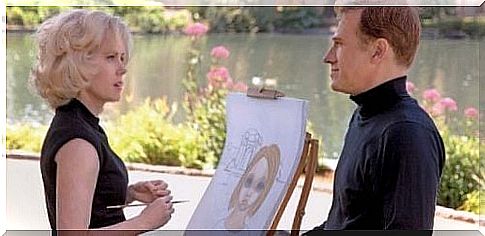
Big Eyes and Manipulation
Margaret, superbly portrayed by Amy Adams, has been married once before. During this marriage she also had her daughter Jane. In the 50s and 60s it was very important for women to have a husband and a stable family. Probably society looked down on her because she was divorced.
Finding a new man when you already had a daughter from a previous marriage was no easy task. Margaret is therefore fooled by the ‘charming’ Walter Keane. Margaret is a true woman of her time, innocent and submissive. However, she also has something special, a great artistic talent.
At first, Margaret succumbs to Walter’s charms. She is happy to see that her work is valued and financially lucrative. Little by little, however, she becomes disenchanted. She begins to see Walter for the manipulator he really is. Ultimately, this puts her in a difficult situation, in which she also has to deal with the media and has to go to court.
Big Eyes , the awakening of women
Margaret wakes up from her fairy tale and starts a fight with Walter. However, this fight brings with it a lot of tension. Yet after years of struggle she manages to win the lawsuit and show that she is the real maker of those ‘big eyes’.
The world had lived in the shadows for years. None of the buyers could believe that it was actually Keane ‘s wife who had made the paintings. The effort Margaret took to be recognized as the owner of her paintings left her trapped in a cage she had assembled herself.
Margaret had no idea how difficult the process would be when she first married Walter, nor did she realize that it was helping her lose her self-esteem.
This was also the moment in history when the women’s revolution began to emerge. It was just the tip of the iceberg that would only come into view later. At a time when the prevailing mindset was subject to patriarchy, Margaret was unable to contain her manipulative husband. Their fight therefore lasted several years.
Margaret Keane ‘s struggle symbolizes the struggle all women face when trying to enter the art world. For her it was an awakening, a rebirth. Burton presents a film that brings us closer to a near-reality.
Margaret’s struggle was also a struggle against machismo, which she actually fought along with the rest of the women of the time.
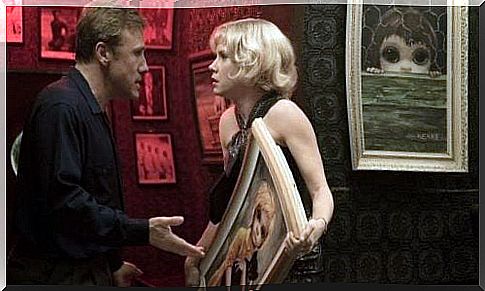
The paintings of Margaret Keane
Margaret’s paintings were characterized by the expressive, large eyes she painted. However, they grew sadder, as did Margaret herself.
The paintings seemed to depict children emerging from war. The big eyes were a true reflection of the depths of the soul, of human feelings. They are overwhelming paintings, but they are not the type that would be displayed in a museum. Many would even regard the paintings as kitsch.
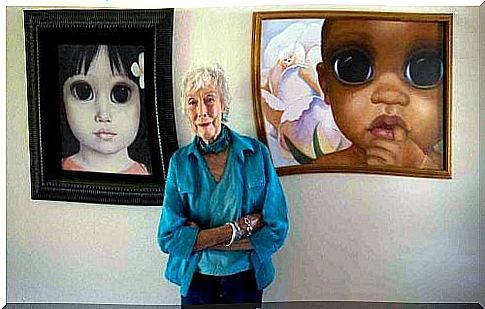
Margaret Keane has some famous and idiosyncratic followers such as Burton, Alaska, Joan Crawford (who had a portrait of herself done by Margaret), and Marilyn Manson.
However, the truth is that there are a lot of people who collect Keane’s work. Yet she is often seen as an outsider, an artist whose work is too kitschy to belong to ‘high culture’.
Susan Sontag spoke about this in her work Notes on Camp . She said in it that “the banal, with the passage of time, can become fantastic,” and we think she was right about this. That is also what Burton wanted to convey with this film. He did this by depicting an artist who was suffering, who had to fight for her work and who actually earned recognition.
